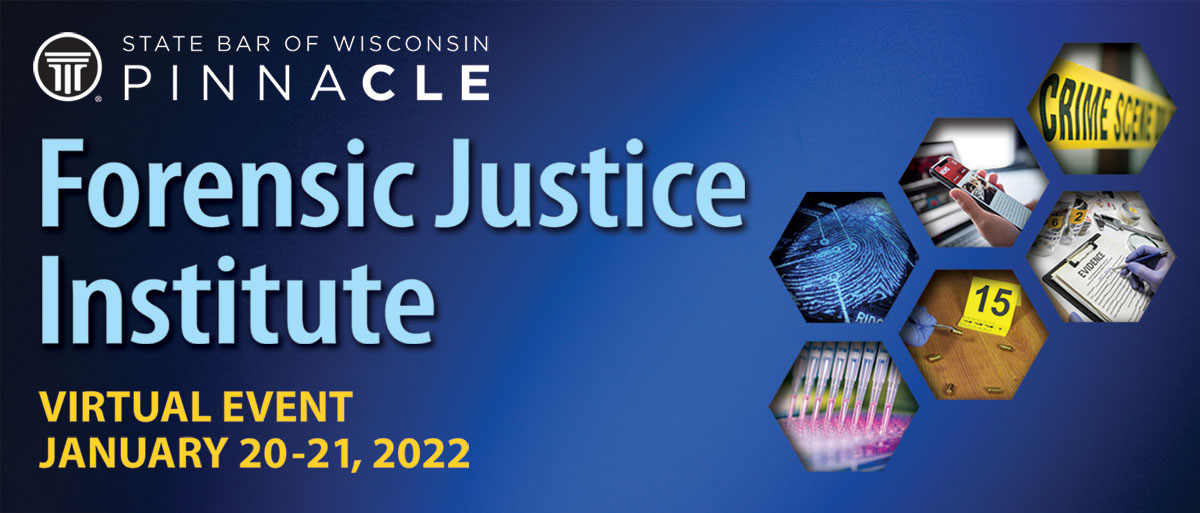Jan. 19, 2022 – According to Elizabeth Daniel Vasquez, special forensic science counsel at Brooklyn Defender Services in New York City, the science behind forensic evidence is only one front in the battle against wrongful convictions.
Another is the relationship between technology and civil liberties. Vasquez said that surveillance plays a leading role in an increasing number of criminal defense lawyers’ caseloads.
“The cases that they pick up, particularly those that involve gun and drug possession or gang allegations, are all coming laden with these technologies and we’re just seeing an explosion in their use,” Vasquez said.
Vasquez is scheduled to speakat the Forensic Justice Institute, Jan. 20-21, 2022, a virtual event co-sponsored by the Center for Integrity in Forensic Sciences and State Bar of Wisconsin PINNACLE®.
Smart Phones
The rise of smart phone technology is the main driver of the phenomenon, Vasquez said. In the past, the police would need separate warrants to search a suspect’s bank account, library records, and email.
Facial recognition software and automated license plate recognition software present other challenges for criminal defense lawyers.
And New York City’s Domain Access System – a massive database that allows the police to search multiple databases and uses algorithms – raises issues of concern to everyone, Vasquez said.
One problem with surveillance technology is the fact that it’s programmed by humans, who are subject to biases and prejudices. That means it’s liable to make mistakes, just like humans.
Facial recognition software, for instance, has been “taught” to differentiate between faces by being fed a disproportionate share of photographs of white men. That means it’s less able to distinguish between faces of women and men of other races, Vasquez said.
“What’s in the training set impacts how good the algorithm is going to be when it’s placed into action in a real-world scenario,” she said. “People who have darker skin tones and people who are not men tend to be less well-served by facial recognition software.”

Advancements in technology and testing have created an explosion of new resources for investigators, prosecutors, and defense counsel. But, misapplication and misunderstanding of those advancements can lead to devastating outcomes in the criminal justice system. That, along with new scrutiny of sciences that have been used in courtrooms for many years have raised questions that cannot be ignored. Designed with legal professionals in mind, the
Forensic Justice Institute is a premier virtual event that puts the scientific evidence used in court under the microscope.
Together with the Center for Integrity in Forensic Sciences (CIFS), we've gathered renowned experts in forensics and nationally known speakers to present an unbiased look at the current scientific methods and results often submitted as evidence. Understand the reliability of the methods utilized so you can ensure your next criminal case contains science facts – not science fiction, and improves the use of forensic science in the criminal justice system.
Topics covered will include:
- Firearm analysis
- DNA analysis
- Digital forensics
- Forensic bias in interrogations
- Crime lab trends
- And more!
The Forensic Justice Institute will be submitted to the Wisconsin Board of Bar Examiners for up to 11.5 CLE and 1.5 EPR credits. It has been approved for 3.5 judicial education credits by the Wisconsin Office of Judicial Education.
Register at forensicjusticeinstitute.org
